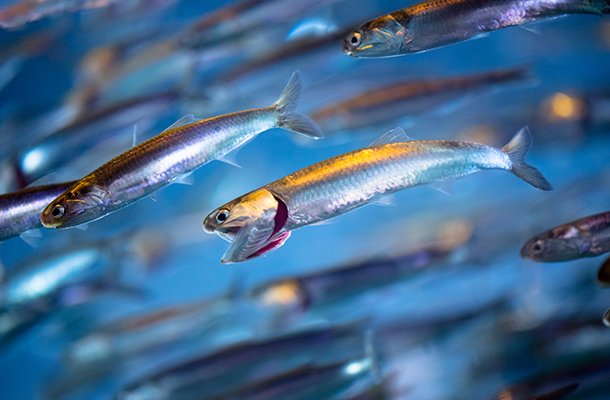
Just like any fish, anchovies rely on specific conditions for survival. They’re picky about their homes, needing the right balance of temperature, salinity, and food supply. Understanding where they live helps us appreciate not just anchovies but the ecosystems they inhabit. So, let’s dive into the world of anchovies and explore their watery homes!
What Are Anchovies?
Before we explore their habitats, it’s good to know what anchovies actually are. These small fish belong to the family Engraulidae and are generally about 2 to 12 inches long. They have a silver stripe along their sides that makes them quite distinctive.
Anchovies are known for their strong flavor and high oil content, which is why they’re often used in culinary dishes like Caesar salads, tapenade, and even on pizzas. They’re packed with nutrients too, offering a great source of omega-3 fatty acids, protein, and essential vitamins. Honestly, you might even say anchovies are a little nutritional powerhouse in the ocean!
Oceans: The Main Habitat for Anchovies
When it comes to anchovies, the ocean is the primary place to find them. These fish are typically found in temperate and tropical waters around the world, thriving in places with plenty of plankton to munch on. The Pacific, Atlantic, and Mediterranean Oceans are prime spots where anchovies flourish.
In these oceanic waters, anchovies prefer to swim near the surface. They often form large schools, which not only makes them easier to catch but also provides protection from predators. Imagine swimming in a crowded pool where you’re less likely to be picked on—that’s how anchovies work together in schools!
Within the ocean, anchovies are often found in regions called upwelling zones. These areas bring nutrient-rich water from the deep to the surface, creating a buffet of food for tiny fish like anchovies. Places like the California Current and the Humboldt Current off the coast of South America are famous for their thriving anchovy populations thanks to these upwellings.
Rivers and Estuaries: Surprising Anchovy Habitats
You might be surprised to learn that anchovies aren’t confined solely to the ocean. In fact, some species, like the American anchovy, can also be found in rivers and estuaries. An estuary is a spot where freshwater from rivers meets the salty waters of the sea, creating a unique habitat.
These areas are crucial for young anchovies as they provide calm waters rich in nutrients. Think of it as a nursery where little fish can grow strong before heading out into the big ocean. They find abundant food in the form of algae and micro plankton, allowing them to thrive and develop.
Rivers that flow into the ocean can be breeding grounds for anchovies. When it’s spawning time, adult anchovies may swim into freshwater rivers, laying their eggs where conditions are safe. Once the young hatch, they have a sheltered environment to grow before they migrate back to the ocean.
Coastal Habitats: The Best of Both Worlds
Coastal areas are another fantastic home for anchovies. Here, they find abundant food sources and protection from larger predators. Shallow waters, like those found around islands or coastal bays, are perfect for these little fish.
These regions often have rich vegetation, which supports a wide variety of marine life. Underwater plants provide hiding spots, while the rich nutrients in these areas attract plankton, the main food source for anchovies. Honestly, it’s a buffet that keeps them coming back.
In some places, like the southern coast of California, anchovies swarm near the shore during certain seasons. Fishermen love to take advantage of this, casting nets during peak times to gather fresh anchovies for markets and restaurants.
Human Impact on Anchovy Habitats
As much as we enjoy anchovies, our activities can significantly impact their habitats. Overfishing is a major concern, especially in the ocean where anchovy populations have declined in some areas. It’s a bit like taking too many cookies from the jar—you might love them, but if you’re not careful, there will be none left!
Pollution also threatens these fish and their environments. Chemicals and waste can harm the delicate balance of marine ecosystems, affecting food supplies and overall health. Healthy habitats support healthy fish, and when waterways become contaminated, it’s not just anchovies that suffer; everything in the ecosystem feels the effects.
Conservation efforts are essential to protect anchovy habitats. Sustainable fishing practices, pollution control, and habitat restoration go a long way in ensuring that anchovies continue to thrive in our oceans, rivers, and estuaries.
So, now you know where anchovies are found! From the deep, nutrient-rich oceans to the surprising fresh waters of rivers and estuaries, these little fish have more habitats than you might have thought. It’s clear that anchovies play an important role in marine ecosystems, and their presence is a good indicator of ocean health.
By protecting their habitats, we not only ensure a sustainable source of anchovies for our dinners but also contribute to the overall health of our oceans and rivers. It’s all connected, and every little effort helps. Next time you enjoy those tiny fish, remember the journey they took from their aquatic homes to your plate. It’s a journey worth understanding, don’t you think?
